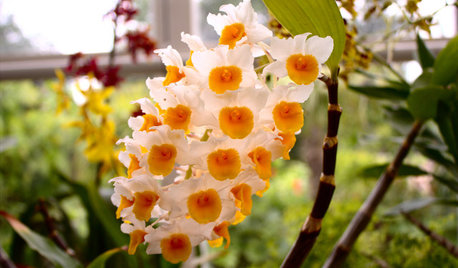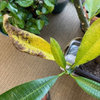Repotting Plumeria Question
staze
11 years ago
Related Stories

HOUSEPLANTS8 Essentials for Healthy Indoor Plants
Houseplants add so much to our homes — and can thrive when grown in the right conditions. Keep these tips in mind
Full Story
HOUSEPLANTSMother-in-Law's Tongue: Surprisingly Easy to Please
This low-maintenance, high-impact houseplant fits in with any design and can clear the air, too
Full Story
HOUSEPLANTSOrchids 101: Try Something Different With Dendrobiums
If you’re looking for something out of the ordinary, these orchids may be a good choice
Full Story
EDIBLE GARDENSSummer Crops: How to Grow Tomatoes
Plant tomato seedlings in spring for one of the best tastes of summer, fresh from your backyard
Full Story
HOUSEPLANTSIndoor Winter Gardens for Cheerier Days
Bring plants inside for drab-days mood boosting — not to mention cleaner indoor air and protection for your greenery
Full Story
GARDENING GUIDESCommon Myths That May Be Hurting Your Garden
Discover the truth about fertilizer, soil, staking and more to keep your plants healthy and happy
Full Story
SPRING GARDENINGTop 10 Scented Plants for Your Garden
A palette of perfumed plants can transform even the smallest of gardens into a sensory delight
Full Story
HOUSEPLANTSHow to Grow Orchids Indoors
Orchids are the exotic aristocrats of the flower world and can make themselves comfortable in almost any home
Full Story
HOUSEPLANTSPlay Up Some Fiddleleaf Figs for a Lively Indoor Tune
Strike a dramatic chord in a minimalist scene or a country note in a rustic setting — fiddleleaf fig plants harmonize with any style
Full Story
REGIONAL GARDEN GUIDESCalifornia Gardener's March Checklist
Give natives and tropicals a well-deserved spotlight — plus, discover an easy herb that keeps on giving
Full StoryMore Discussions







cwcervantes
stazeOriginal Author
Related Professionals
Chattanooga Landscape Architects & Landscape Designers · Erie Landscape Architects & Landscape Designers · Glassmanor Landscape Architects & Landscape Designers · Otsego Landscape Architects & Landscape Designers · Mooresville Landscape Contractors · Cornelius Landscape Contractors · Elkridge Landscape Contractors · Kahului Landscape Contractors · Milford Landscape Contractors · Seven Hills Landscape Contractors · Shoreview Landscape Contractors · Soddy Daisy Landscape Contractors · South Portland Landscape Contractors · Tigard Landscape Contractors · Rockford Siding & ExteriorsLoveplants2 8b Virginia Beach, Virginia
stazeOriginal Author
Loveplants2 8b Virginia Beach, Virginia
Loveplants2 8b Virginia Beach, Virginia
tapla (mid-Michigan, USDA z5b-6a)
tapla (mid-Michigan, USDA z5b-6a)
stazeOriginal Author
stazeOriginal Author
stazeOriginal Author
rjcantor